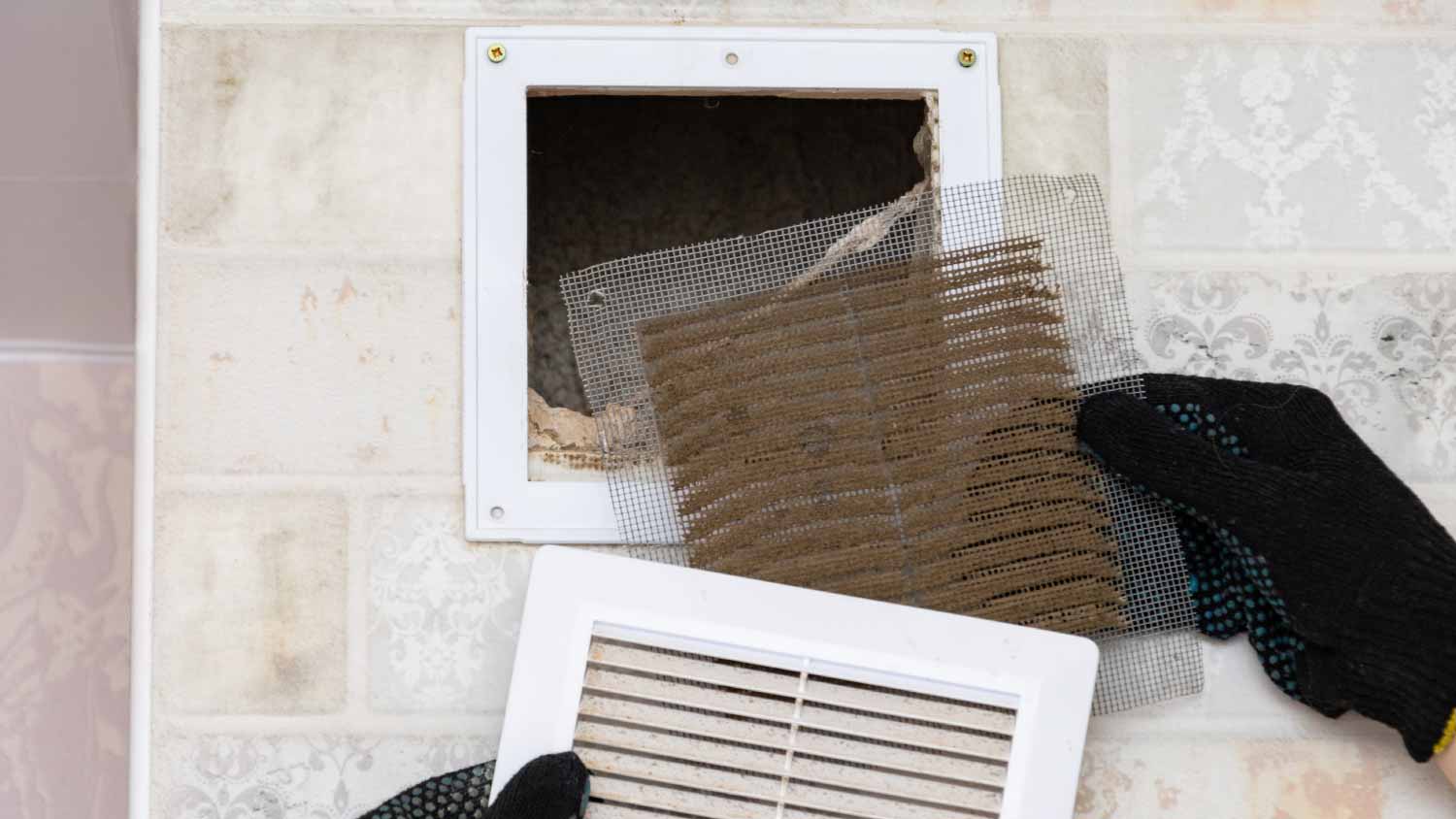
Curious about air duct cleaning costs? Get insights into pricing factors, benefits, and how to tell when it’s time for a good cleaning.
Better airflow is just a dusting away


Dirty air vent covers are not just an eyesore. They can actually reduce air quality throughout the home, which can cause allergies to flare up and impact breathing. Luckily, you have a few simple cleaning options. Learn how to clean air vent covers in your house with this DIY-friendly guide.
You should clean air vent covers for the same reasons you replace the air filters and maintain the ductwork: for better air quality in your home. Poor air quality can lead to health issues, like respiratory problems and allergy flare-ups, but that’s just the beginning. Dirty air vents also drag down the efficiency of an HVAC unit, which results in higher energy bills and, in the worst-case scenario, a complete system failure. Like hiring a pro to clean the ductwork, consider this task a part of regular HVAC maintenance.
If your house isn't cooling down or heating up like it used to, before calling in a pro for air duct maintenance, make sure all your vents and return vents are open and unobstructed.
A local HVAC professional should clean your vent covers when they do a comprehensive ductwork inspection and maintenance visit. Cleaning ductwork costs anywhere from $150 to $800, but this cost refers to cleaning the whole system. Specialists may charge $25 to $50 to clean each air vent and cover.
However, cleaning the vent cover alone is a DIY-friendly project you can complete for very little money. Just factor in the cost of household cleaning supplies.

You have a few options for cleaning your vent covers. Here are the most common ones.
A quick wipe-down is perfect for monthly maintenance. Start by turning the HVAC system off to prevent air from blowing as you work. Cover furniture below the vent with a sheet to keep these items clean.
Use a handheld vacuum or a hose attachment to vacuum the vent covers. This will remove most of the dust and dirt. Finish the job with a damp microfiber cloth. Wipe the cover and the area immediately surrounding the vent.
This is a good process for twice-yearly deep cleans. Turn off the HVAC system, then remove the vent covers by unscrewing the corners. Mix hot water with dish soap or a basic household cleaner.
Place the vent covers in the mixture and allow them to soak for a few minutes. Retrieve the items and wipe them down with a microfiber cloth, paying special attention to any lingering debris. Rinse them off with cold water and give them another quick wipe, allowing them to dry before reinstalling.
If the vent covers are particularly gross and covered with rust, it’s time to pull out the heavy hitters. Once you’ve removed the covers, hit any rusted area with a high-quality rust remover. Follow that up with a quick soak in hot water and detergent.
Wipe everything down with a microfiber cloth and rinse in cold water. Wipe it down again, dry it fully, and then paint the formerly rusted area to match the rest of the vent cover. Allow the paint to dry before reinstalling.

Now that you have gorgeous, clean air vent covers, follow these simple steps to keep them in pristine condition.
Monthly wipe down: To discourage the build-up of grime, give each vent cover a quick spot clean every month.
Change the air filters: Swap out your air filters at least quarterly. This will keep the system running smoothly and ensure the vent covers aren’t covered in gunk.
Regular HVAC inspections: Don’t forget about annual HVAC system inspections. The inspection team will recommend further maintenance to ensure the covers and system remain clean.
Complete repairs and maintenance: Each HVAC component can impact the entire system. Make sure to address any maintenance or repair concerns as soon as possible.
Experts recommend that homeowners deep-clean vent covers twice a year. This project is good to undertake before winter and summer when the HVAC system is most used. However, this frequency range increases with dirty ducts or air filters. Also, give them a quick clean once a month or when you replace the air filters.
Cleaning your air vent covers is a DIY-friendly task, so long as you have the right tools to remove the covers and no accessibility issues. However, many homeowners hire a pro to deep clean the vents and vent covers simultaneously with their regular HVAC inspection. Lightly cleaning your vent covers monthly prevents buildup, which reduces labor for future deep cleans.
From average costs to expert advice, get all the answers you need to get your job done.

Curious about air duct cleaning costs? Get insights into pricing factors, benefits, and how to tell when it’s time for a good cleaning.

Whole-house air purifier costs depend on a variety of factors, including your home’s size and layout. The type of purifier you choose matters, too.

Can flexible air ducts be cleaned? Yes, but you need to make sure you don't damage it. In many cases, it's best to hire a pro to clean your ductwork.

Perhaps you want to clean your ductwork but aren't sure when is the best time to clean air ducts. We'll explain everything to help you get on the right schedule.

Wondering what’s causing that noisy air vent in your bedroom? Here are some of the most common culprits—and how to deal with them.

If you are among many homeowners wondering if air duct cleaning is worth it, here we clear the air so you can breathe easier at home.